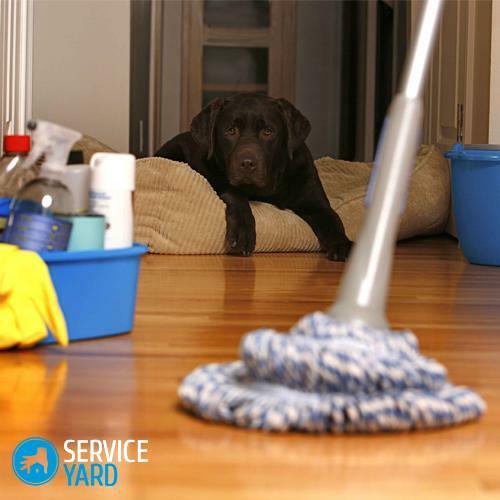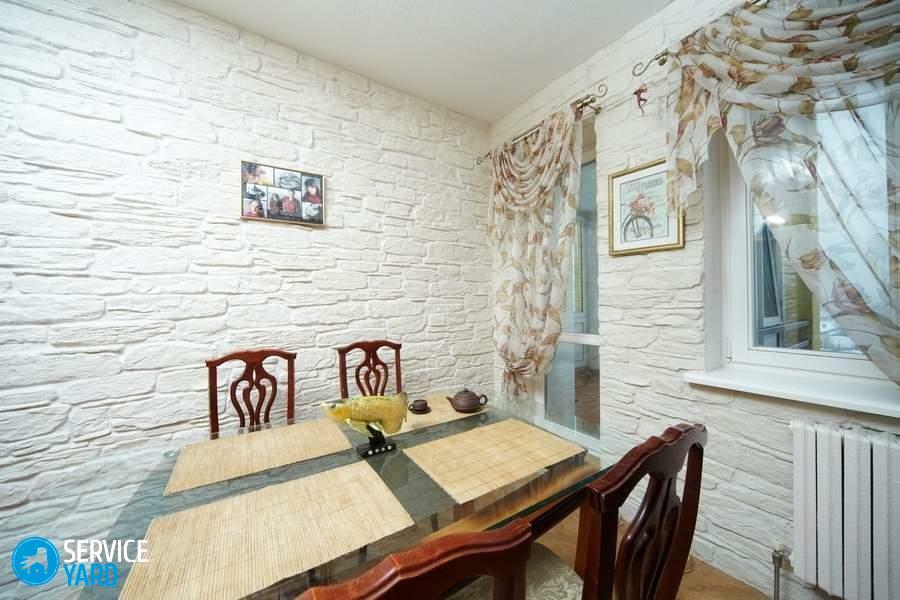It is quite difficult to accurately calculate the required amount of adhesive for a tile. But it is undesirable to acquire material "by eye". Subsequently, you will have to either buy it in addition, or somehow get rid of the surplus. Difficulties will arise in determining the total cost of repairs, and as a result, the allocated funds may not be enough or, on the contrary, a surplus will form. It is necessary to calculate the flow as accurately as possible, but it is quite difficult to do it manually. You will have to use rather complex formulas, which are rather difficult to operate without having the appropriate experience. The consumption of tile adhesive for 1 m2 of tiles depends on many factors. This article will help you figure out which of them you need to focus on when drawing up a preliminary estimate.
Content
- What affects the consumption of glue
- Type of glue
- Tile size and type
- Tiling technology
- Surface type
- Temperature regime and weather conditions
- Brand and composition of glue
- Spatula type
- Master's qualification and technique
- Consumption rate and characteristics of popular brands of glue
- Eunice
- Ceresite
- Kreps
- Knauf
- Bolars
- Hercules
- Vetonite
- EC
- Plitonite
- Prospectors
What affects the consumption of glue
In the process of repair, many tasks have to be solved, on which the success of the entire event depends. It is necessary at the design stage to determine the nuances of the decoration and the interior itself, and calculate the required amount of materials, in particular, tile adhesive.
A special service will help you calculate the amount of glue you need as accurately as possible. The interactive calculator will instantly perform the necessary calculations based on the parameters specified by the user. All calculations are made online based on special formulas. With its help, you can determine in a second how much glue will go per square meter and how much mixture is required.
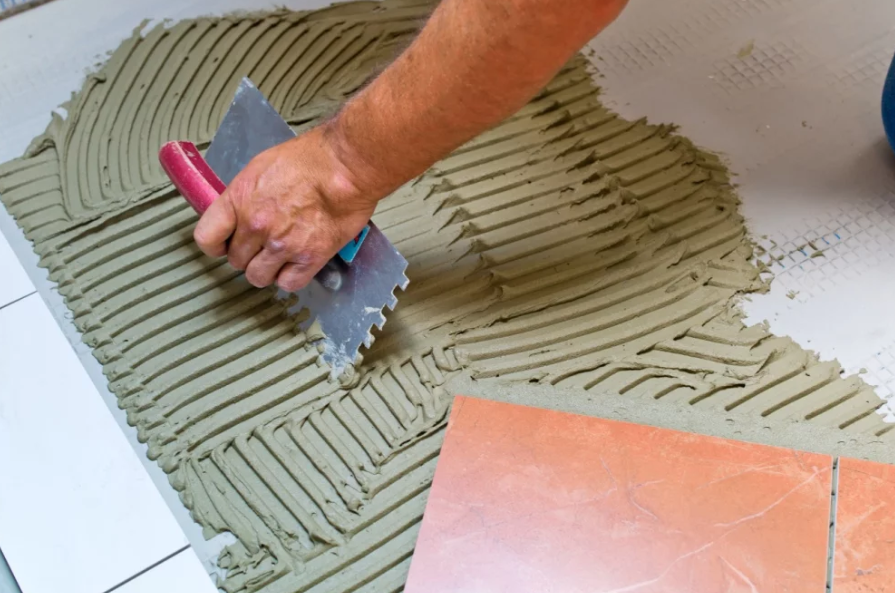
In the table you need to specify:
- the shape and size of the tiles;
- the area of application of the glue - outside or inside the building;
- the surface to be coated is walls or floor;
- type of base - concrete, gypsum or cement plaster, waterproofing, old layer of tiles, stone or porcelain stoneware, drywall - normal or moisture resistant;
- operating conditions of the future coating - heating, freezing, high humidity, contact with water;
- type of facing - ceramic tiles, stone - artificial or natural, mosaic - ceramic, glass, metal, porcelain stoneware, wood;
- type of glue;
- laying area.
Using the calculator, you can get only averaged data. They are useful for rough preliminary calculations. If the adhesive is purchased for cladding large projects, it is necessary to check the material consumption on the surface area empirically. To obtain correct indicators, it is necessary to understand that the type of glue affects the consumption of dry mixtures, its brand and composition, surface structure of tiles, laying technology and even specialist qualifications - tiler. Let's take a closer look at these factors.
Type of glue
To perform facing work, the following types of adhesives are used:
- cement-based - the most demanded and available materials. Supplied in the form of dry mixes, which must be mixed with water before use, in accordance with the instructions on the package;
- dispersive - the composition is sold in a diluted form. Installation can be started immediately after opening the package. Excellent plasticity and viscosity of the material greatly simplifies the work, so even inexperienced craftsmen can use it with success. The composition is optimal for the installation of thin tiles, since it has a good adhesive ability;
- epoxy - preparing a mixture can cause difficulties for a beginner, therefore, in the absence of the necessary experience, it is better not to use it. The fact is that a component must be added to the solution, which acts as a catalyst that provokes the start of a chemical reaction. When adding it, it is necessary to proceed very carefully and observe the exact dosage.
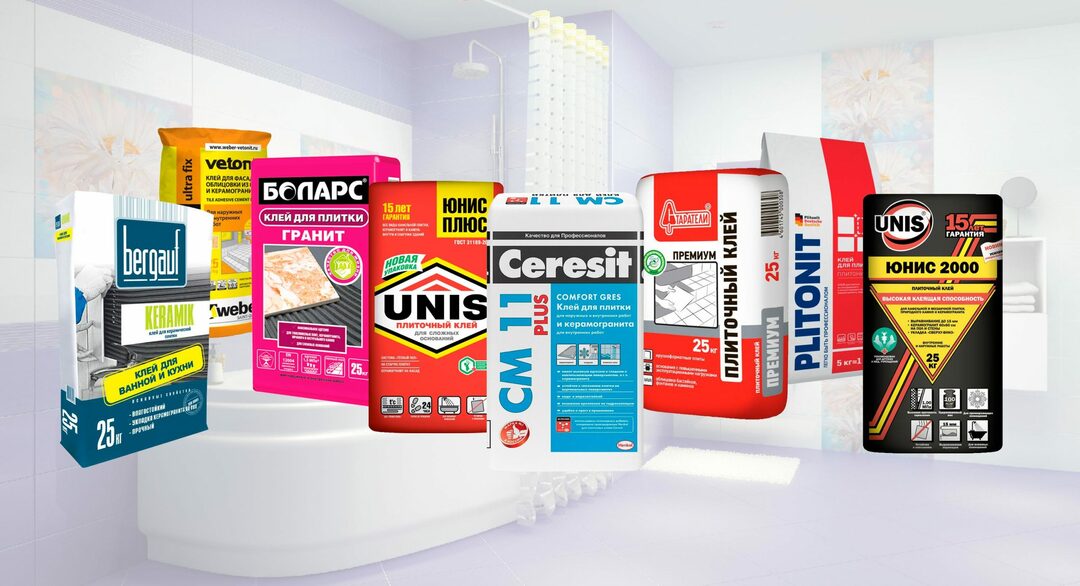
Tile size and type
To calculate the amount of glue, the size, weight and type of tile covering are taken into account. The larger and more massive the cladding elements, the thicker the glue must be applied. If for a 20x20 tile the optimal layer will be 3 mm, then for a 40x40 tile you cannot do without a layer of 4 or 5 mm.
The material from which the tile is made also affects the consumption of glue. This indicator should also be taken into account, despite the fact that manufacturers indicate an average value. In fact, for laying tiles, a larger amount of mixture is required than for facing surfaces with porcelain stoneware.
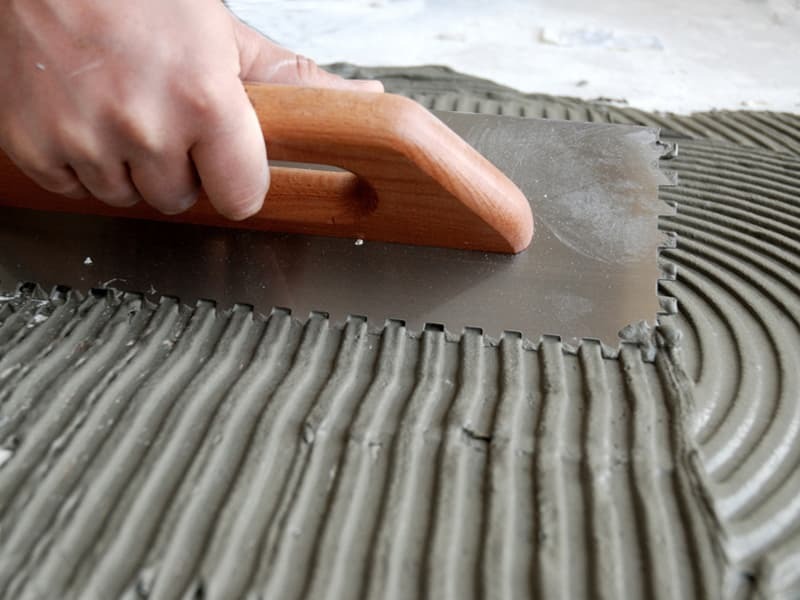
In the latter, the glue is practically not absorbed, due to which a minimum amount of solution is sufficient for laying it. Uneven and porous materials, on the other hand, require a thicker layer of material and in this case, the glue must be purchased with a margin.
Tiling technology
In the process of laying ceramic tiles, a very important stage is the preparation of the base, which includes:
- alignment;
- padding.
On a properly prepared surface, there should be no drops, grooves, cracks. It is very problematic to correctly calculate the glue consumption when laying the facing material on an uneven surface. To eliminate the differences, you will have to lay glue in a thick layer, due to which its consumption will increase significantly.
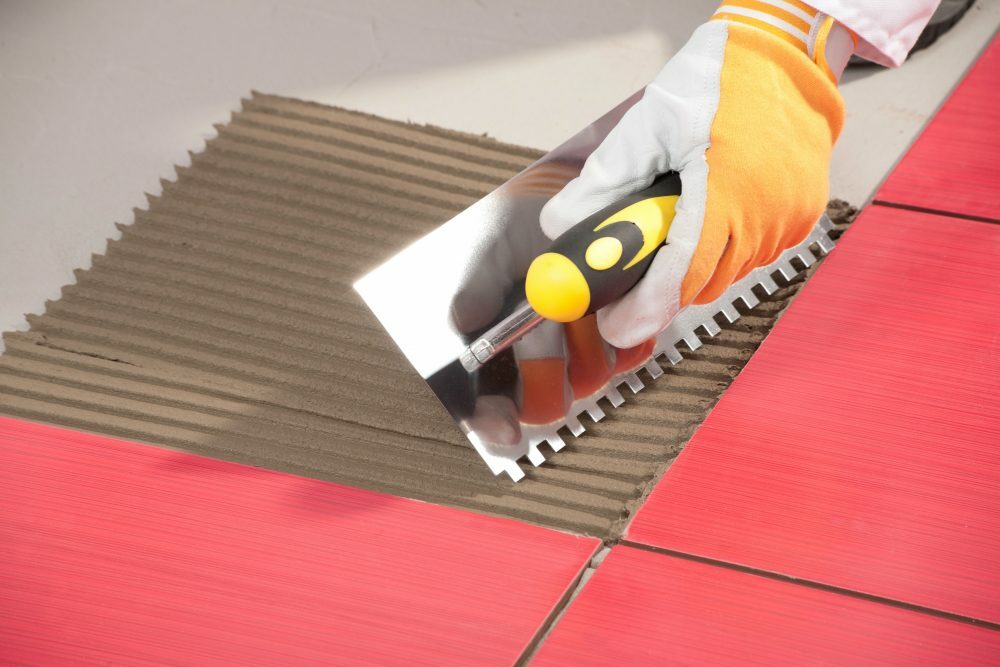
Much more glue will go away even if the substrate has a strong ability to absorb moisture. The water-based adhesive will need to be applied in a thick layer to compensate for absorption. That is why priming is an integral part of the cladding process, which helps to strengthen the surface and limit material consumption.
Surface type
The porosity of the surface to be faced also affects the consumption of material, so it is necessary to choose a mixture based on this indicator. The surface of the tile itself also plays a role. If it is porous or, moreover, it is embossed, an increased consumption of glue cannot be avoided.
The amount of material required is influenced by the type of substrate that needs to be veneered.
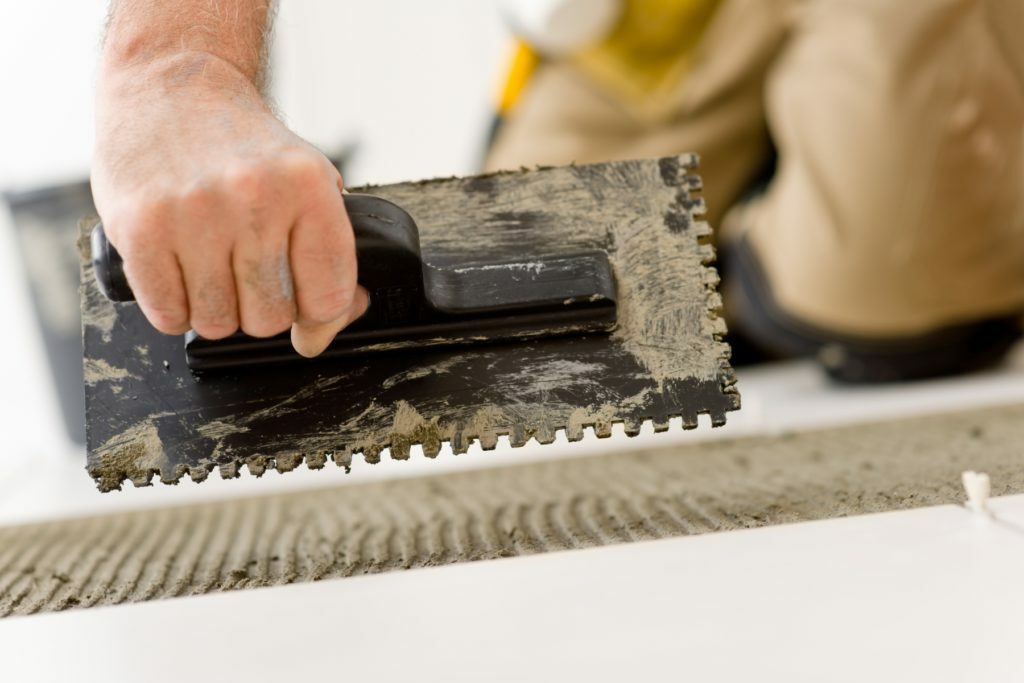
It can be a surface of:
- concrete;
- drywall;
- bricks;
- wood;
- cement.
The surface of these materials has different absorbency. For example, brick absorbs adhesive mixture much more strongly than concrete or drywall. A concrete base absorbs the least amount of glue compared to a cement base, and even more so a wooden base. Therefore, when calculating, it is necessary to take into account the ability of the surface material to absorb moisture.
Water-based compounds absorb significantly more intensively than epoxies.
Temperature regime and weather conditions
When calculating the amount of glue, it is necessary to be guided by the temperature factor, and take into account the microclimate in the room. For the use of adhesives, the optimal temperature is from 18 to 25 degrees Celsius. Failure to comply with these standards can lead to a violation of the consistency of the glue and its viscosity, although in the range from 5 to 38 degrees above 0, the gluing quality remains.
Indoor and outdoor temperature and humidity also affect the rate of evaporation of moisture from the adhesive. As a result, the hardening and adjustment steps of the tile can be shortened or extended.
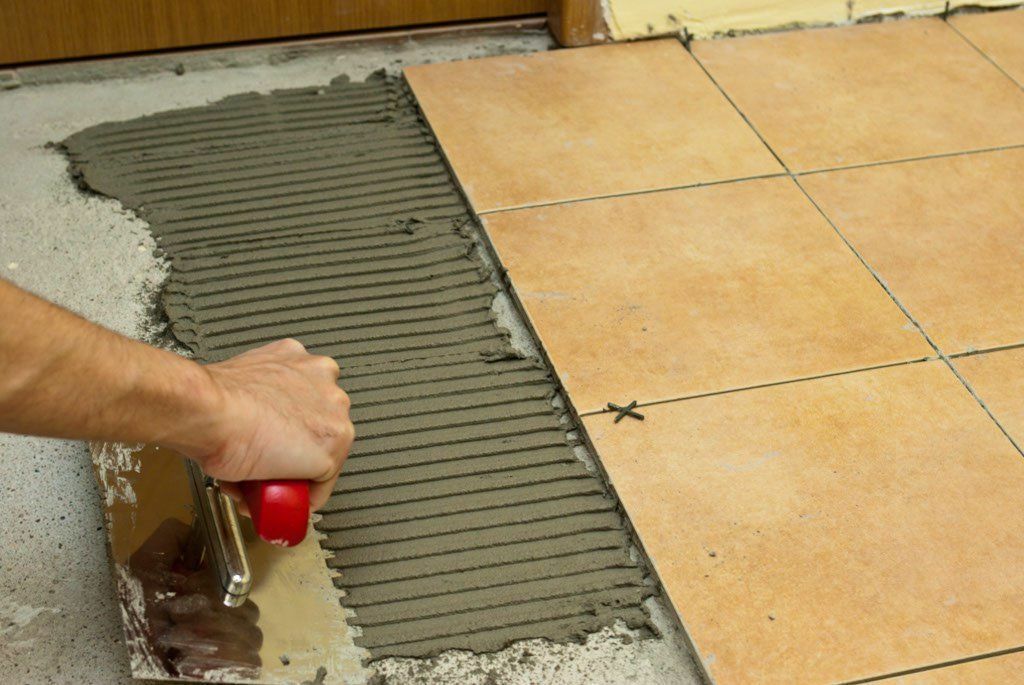
Brand and composition of glue
Various types of glue contain all kinds of additives that can enhance the qualities of the composition and give it additional properties. Certain additives are designed to increase the moisture resistance, adhesion and frost resistance of the material. These ingredients are capable of increasing or decreasing the viscosity of the adhesive. A thick mixture can be applied in a thicker layer, therefore, its consumption will be higher.
When calculating the required amount of glue to perform work, it is necessary to take into account the amount of these components and their characteristics. Information on this is contained in the instructions for use of the mixture.
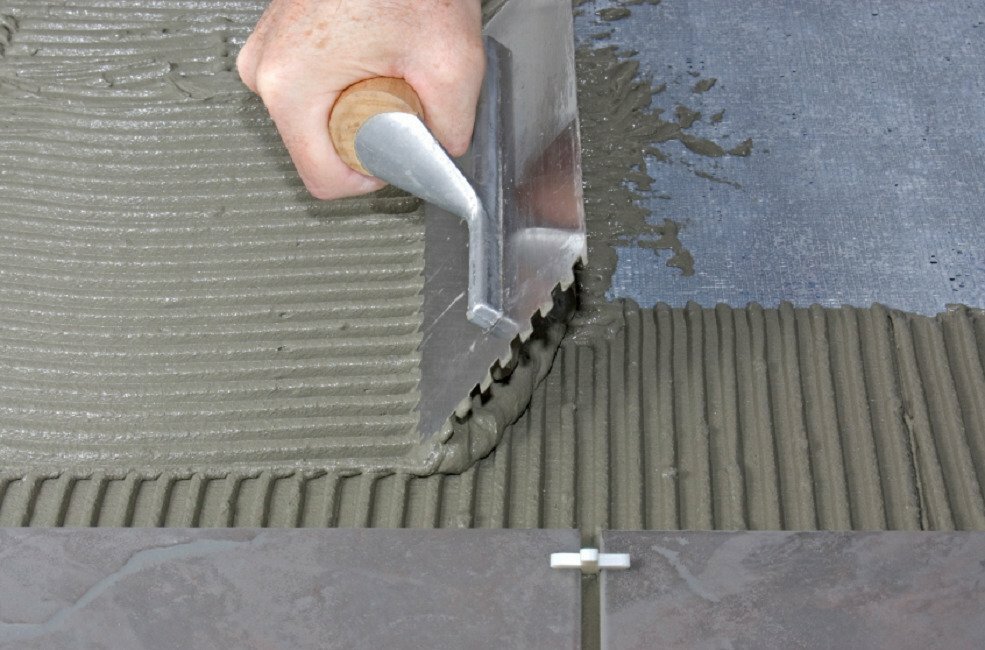
Spatula type
Spreading glue without a special spatula with teeth and maintaining a certain layer thickness is very difficult and subject only to experienced craftsmen. Manufacturers very often recommend a specific trowel tooth size for a particular product. These parameters are indicated in the instructions for the adhesive mixture.
When laying tiles of 30x30 cm, it is not recommended to use a trowel with projections larger than 8 mm, as it will be difficult to distribute the adhesive evenly on the surface. The glue consumption also depends on the height of the teeth. For example, when installing floor modules with dimensions of 40x40, it is allowed to use a spatula with a tooth of 10 mm, but remember that this will require up to 4.2 kilograms of glue per square meter. m. A 8 mm spatula can reduce consumption to 3.9 kg per sq. m.

The shape of the teeth is equally important. Rounded projections allow for less glue than square ones.
Master's qualification and technique
The professionalism and experience of the master is an equally important factor that should also not be discounted. Keep in mind that by saving on services, you risk not only getting poor-quality repairs, but also significantly overpaying for materials. An experienced tiler knows how to reduce the cost of glue thanks to a special technique for applying it.
For example, it is unacceptable to take too long to fix the position of the tile. If the time allotted for the adjustment runs out, the mixture will have to be replaced, which will double the amount of adhesive used.
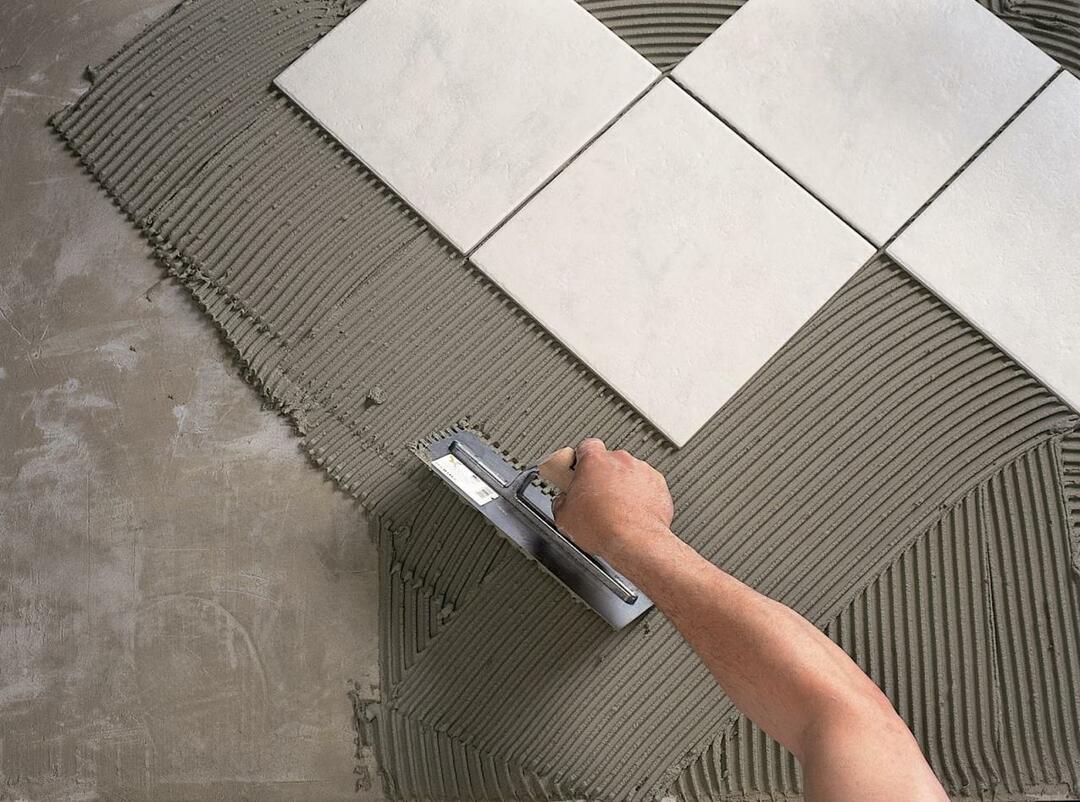
For the use of the ready-made mixture, a certain time is allocated, after which the material will become unusable. Experienced craftsmen are well aware of this feature of tile adhesives and mix them in small portions.
Much depends on the angle at which the specialist holds the spatula in his hand when applying the composition to the surface. If the angle is 45 degrees, the material will be consumed much more economically. An angle of 65 or 75 degrees can increase glue consumption by 35%.
Beginners usually use less economical square-notched trowels for styling. They are ideal for flooring where a thin layer is unacceptable. For walls, it is more correct to use a tool with rounded projections, which allow you to minimize the consumption of glue and create a thin layer.
Consumption rate and characteristics of popular brands of glue
When choosing a glue of a particular brand, you need to pay special attention to the temperature range at which the manufacturer recommends tiling. Adhesives of most popular brands have a good thermal stability margin. Often on the packages you can see the allowable limit of + 90 degrees. Such materials are not recommended for use for a water-heated floor, since these systems require heat resistance margin, which will ensure the integrity of the lining even in the event of breakdown of the thermostatic nodes. They are ideal for infrared heated floors.
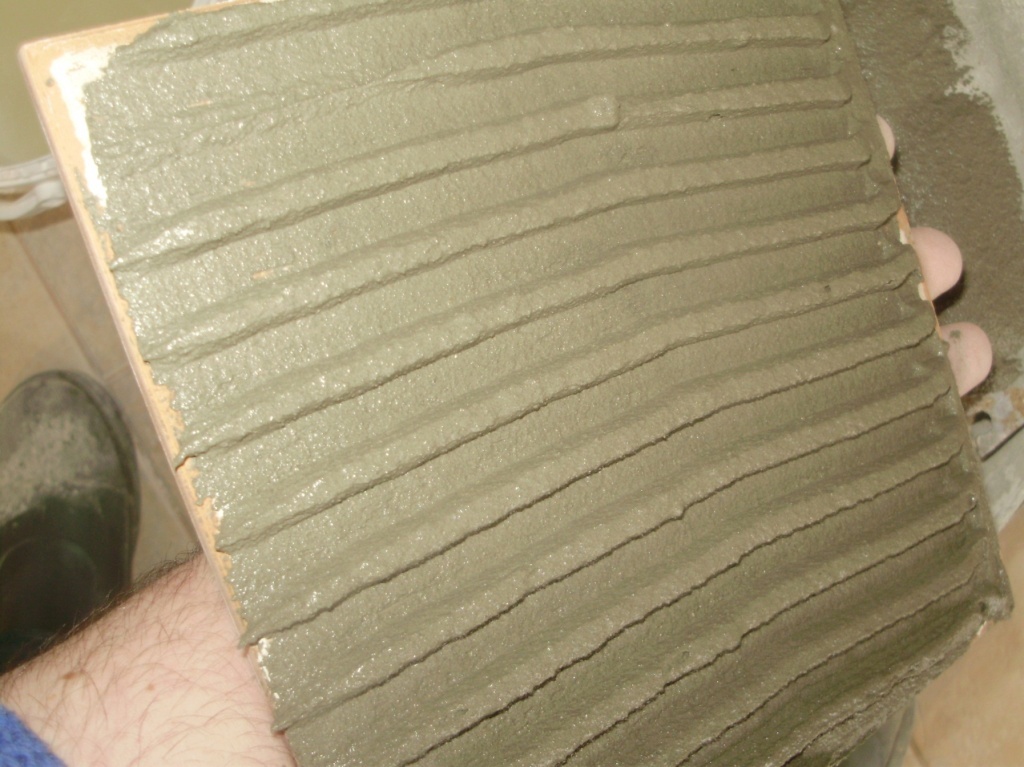
Eunice
The domestic manufacturer presents Unis Plus tile adhesive. The composition is universal, as it is suitable for both heated floor cladding and facade.
This is the most durable compound of the entire line of the company. The product is made from environmentally friendly components, therefore it is allowed for use in childcare facilities - preschool, schools, hospitals. Suitable for work on surfaces that are not subject to deformation.
Adhesive characteristics:
- permissible thickness of the glue layer - 3-15 mm;
- for 1 sq. m. up to 3.5 kg of solution is consumed;
- the finished composition remains viable for 3 hours;
- the adjustment must be made within 20 minutes;
- you can use the coating after 24 hours;
- temperature range of adhesive stability - -50 ° - + 70 ° С
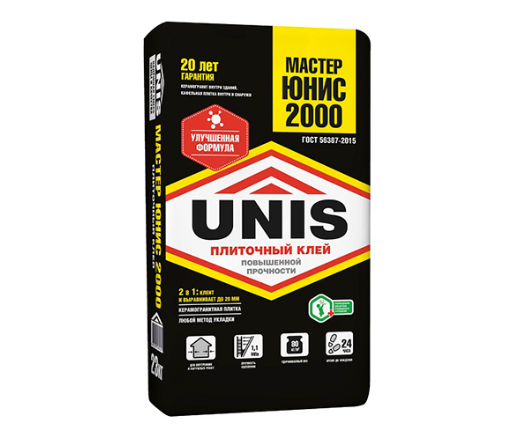
Ceresite
The German manufacturer Henkel produces building mixtures, including high quality tile adhesives. The brand's products are highly demanded and highly appreciated by the consumer. The line contains several types of adhesive for underfloor heating. They are suitable for working with ceramics and porcelain stoneware. High performance characteristics have made the products of this manufacturer indispensable in the arrangement of warm floors. Materials are made from safe, environmentally friendly components that do not emit toxins when heated.
On the mixtures, the manufacturer indicates for which surfaces the particular composition is suitable for facing.
If it is a concrete adhesive, it should not be used for laying tiles on metal, plastic or wood substrates.
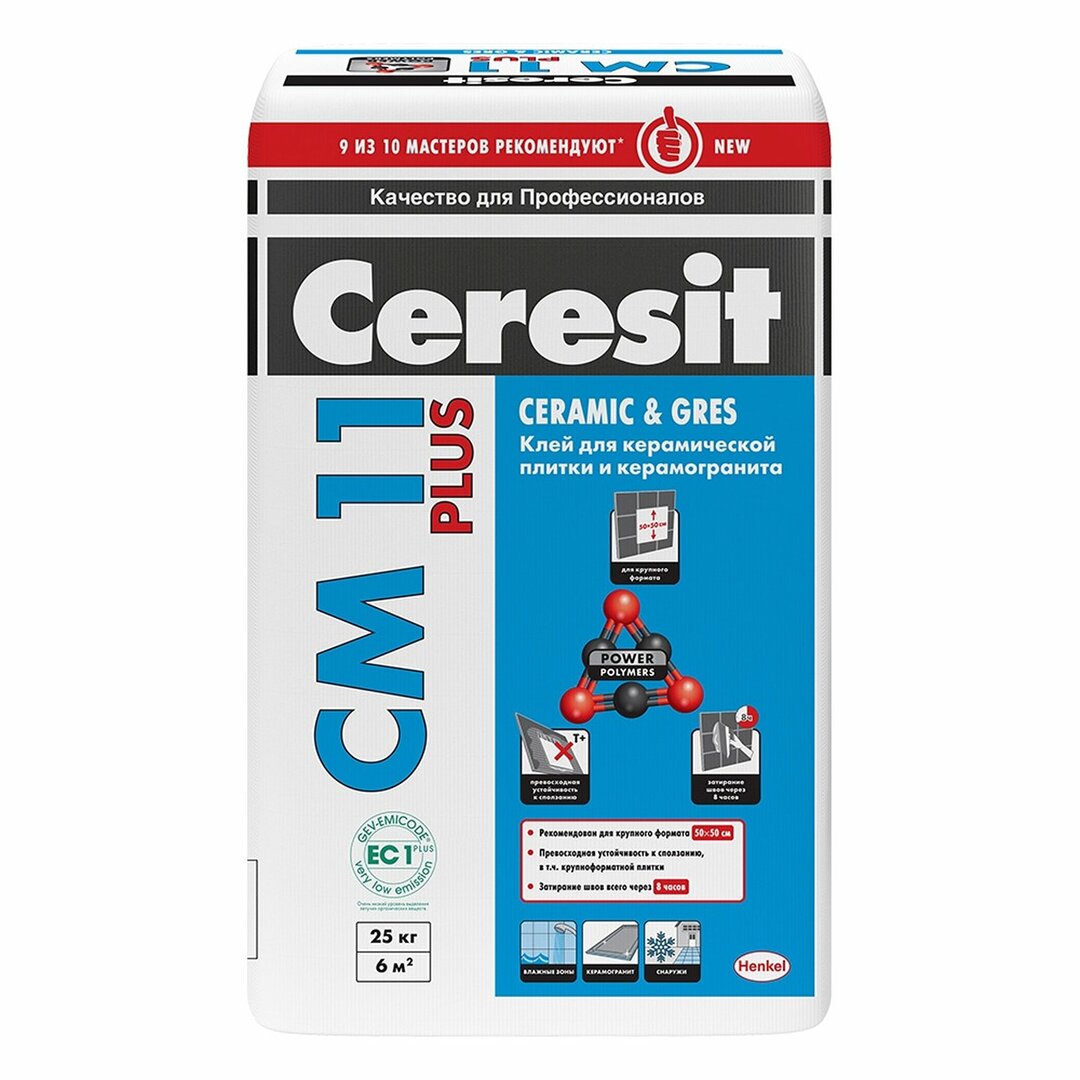
The most popular among the products of this brand is CM 14 Extra glue.
Let's list its main characteristics:
- the ready-made solution is suitable for work for 2 hours;
- ambient temperature range - + 5 ° - + 30 ° С;
- to correct the elements after fixing them, the master has 20 minutes in stock;
- grouting can be carried out a day after the completion of the work.
Kreps
The Russian company "KREPS" produces a wide range of base and reinforced adhesives for ceramic tiles, porcelain stoneware, mosaics. The collection also contains quick-drying and frost-resistant products.
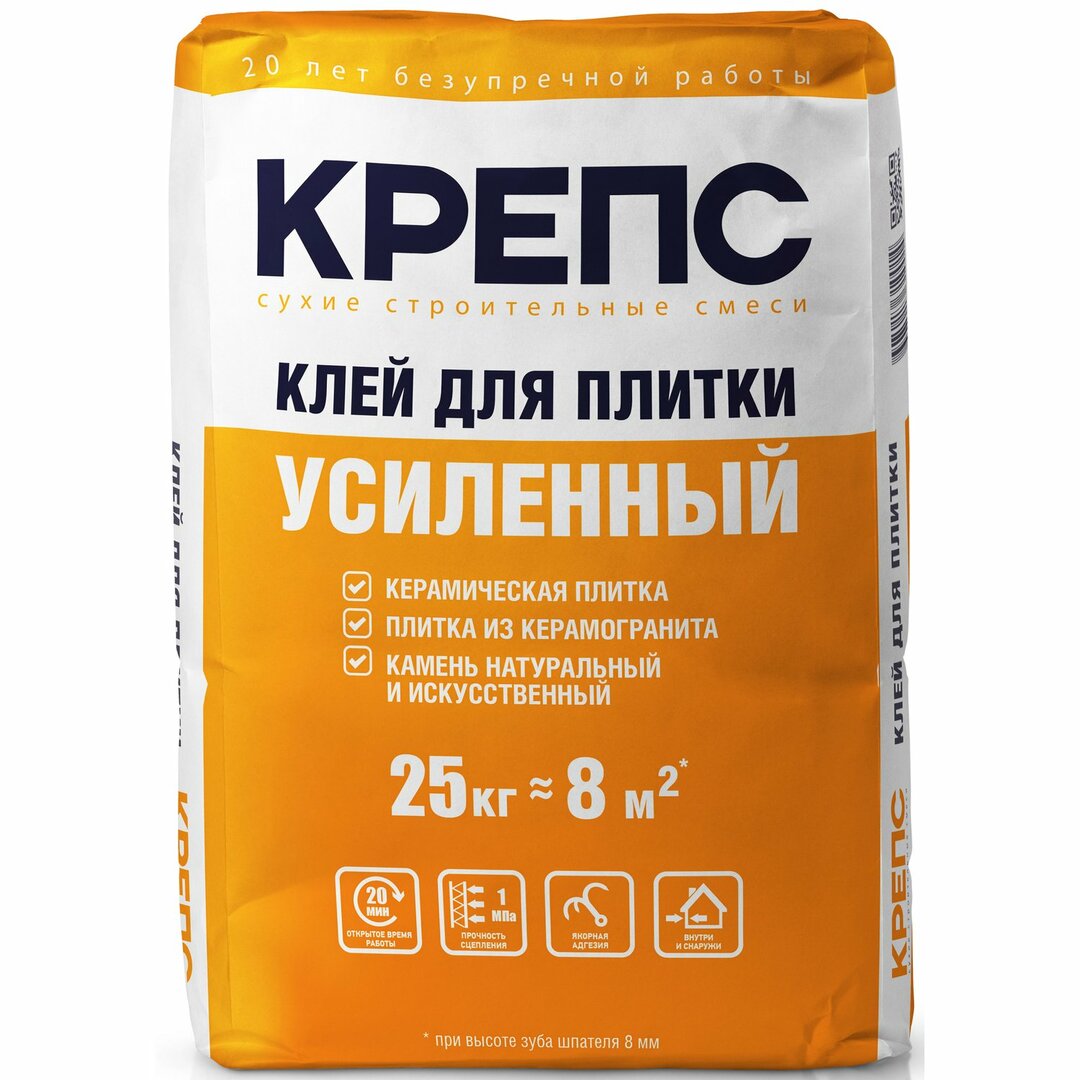
Tile adhesive Kreps Reinforced is intended for indoor and outdoor use and has the following characteristics:
- frost-resistant;
- sold in bags of 25 kg;
- glue consumption per sq. m - 2-3 kg;
- the solution remains usable for 4 hours;
- tiles are allowed to be laid at a temperature of 5 ° C.
Knauf
The German company has long earned the recognition of the Russian consumer. The quality of the offered products speaks for itself. The Knauf Flex mixture is available in the form of a powder with a cement base, which contains modifying additives that improve the adhesion of the mortar to the base and tiles and increase it plastic. Mixes of this manufacturer are intended for facing concrete, drywall, gypsum, old tiles. Perfect for use on balconies, terraces, as they have excellent frost and heat resistance and are not afraid of moisture.
The latter quality allows them to be successfully used when working in bathrooms and swimming pools.
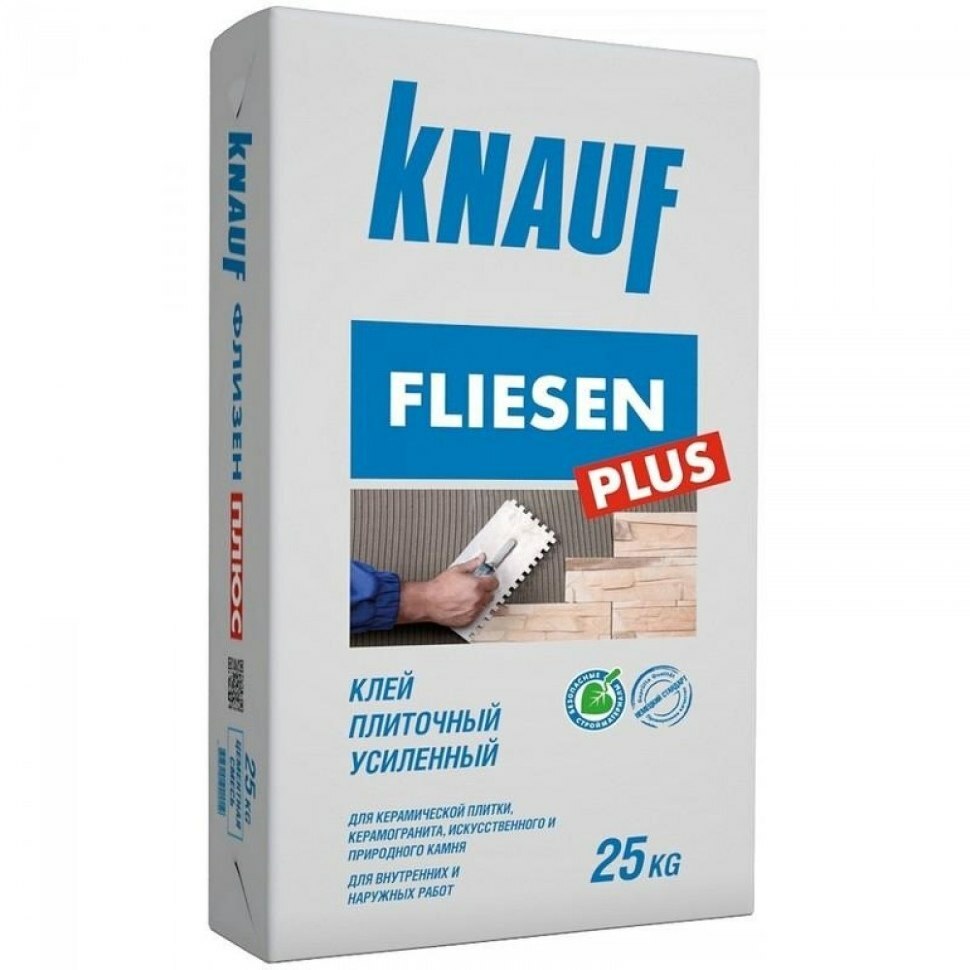
After hardening, the mixture retains its elasticity and resistance to both temperature and mechanical stress.
Solutions have the following properties:
- the layer thickness should not exceed 5 mm;
- working time with ready-made solution - 3 hours;
- you can fix the position of the tile within 10 minutes after gluing;
- seams can be rubbed after 48 hours;
- you can step on the coating no earlier than after 2 days;
- per sq. m. it takes no more than 3 kg of glue;
- work should be performed at a temperature of +5 - + 25 ° С;
- the composition can withstand temperatures up to + 80 ° С;
- shelf life of dry mix - 1 year from the date of manufacture.
Bolars
It wins over most competitors in that it is supplied in plastic buckets of various sizes. It is an acrylic product designed for all types of tiles, including mosaics with a water absorption of 3%. Suitable for cladding almost any surface - cement and gypsum plaster, concrete, drywall.
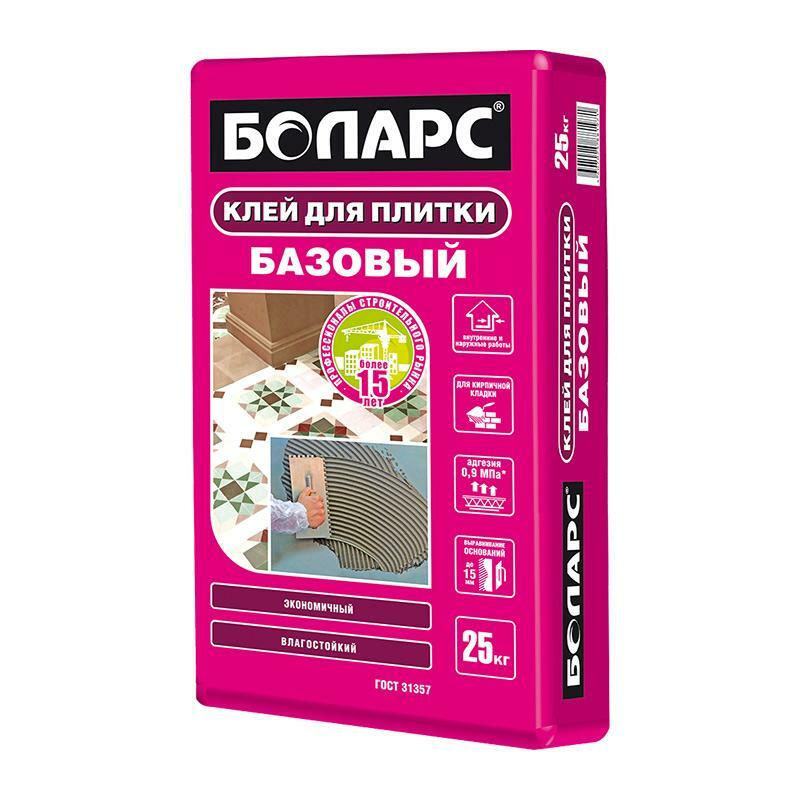
He is not afraid of temperature changes, so he is used in systems of "warm floors", but minus marks are contraindicated for him. The glue is easy to apply, you can adjust the position of the tile within 30 minutes. Dries completely after 7 days.
Hercules
A versatile product presented as a dry mix. Designed for work inside the house. Possesses high adhesion to concrete, stone, brick, plastered bases.
Important characteristics:
- withstands ceramic tiles with a size of 40x40 cm and porcelain stoneware 20x20 cm;
- product consumption with a layer thickness of 1 mm - 1.53 kg per sq. meter;
- working period of the ready mix - 4 hours;
- maximum layer thickness - no more than 10 mm;
- the tiler has 10 minutes to adjust the modules;
- for grouting, leave the coating for 36 hours;
- complete drying of the glue occurs after 3 days.
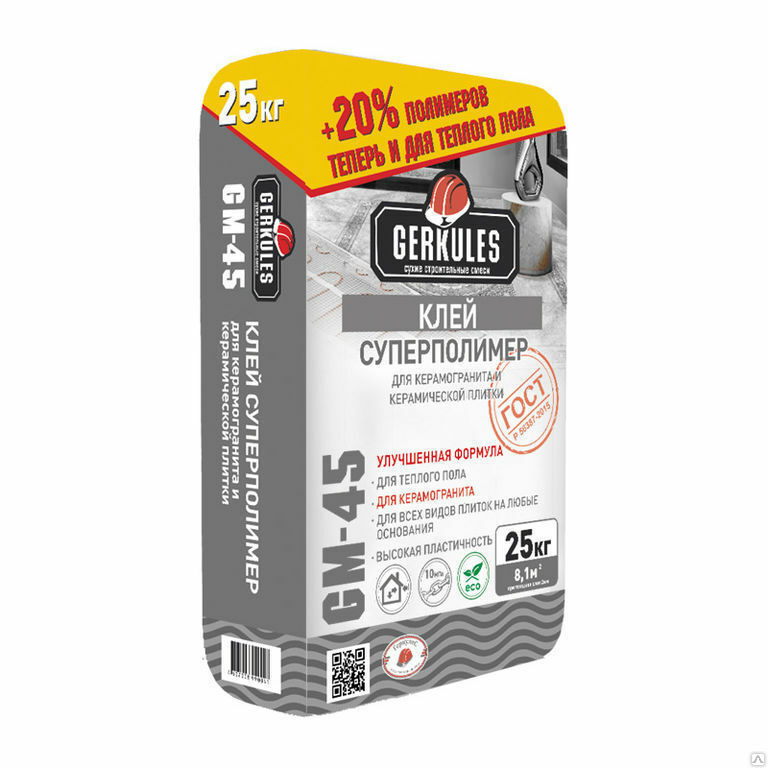
Vetonite
The most common adhesive of this brand, Weber Vetonit Optima, is suitable for damp rooms - in bathrooms, in kitchens - for making an apron. An excellent material for cladding vertical and horizontal surfaces with both tiles and mosaics. Adheres firmly to concrete, brick or cement substrates. Hardening occurs evenly. The surfaces must first go through a shrinkage stage. Deformation can negatively affect the integrity of the composition, and the lining will be damaged.
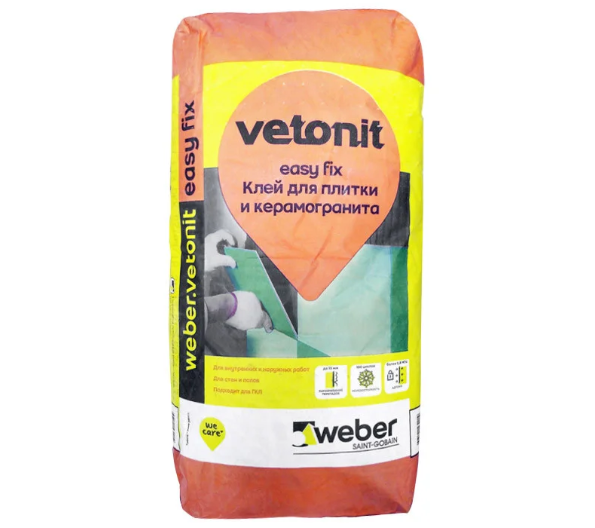
EC
EK 3000 tile adhesive is used to create a ceramic coating from small and medium-sized tiles made from natural and artificial stone. Suitable for cladding horizontal and vertical surfaces. It is also used for leveling the base with differences not exceeding 5 mm. Modules correction time - up to 20 minutes. Suitable for the arrangement of "warm" floors.
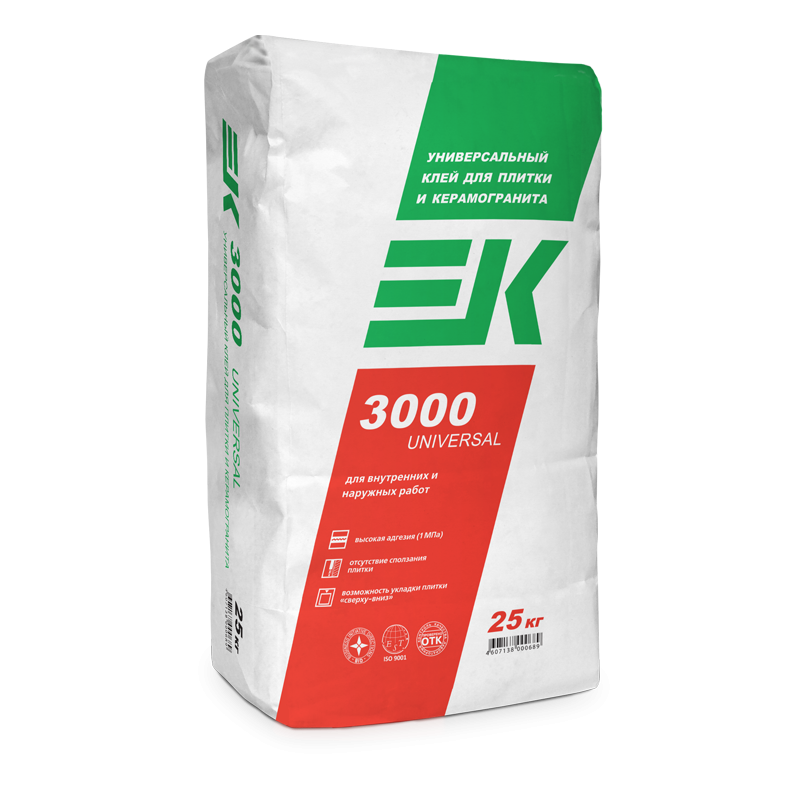
Plitonite
PLITONIT tile adhesive is a product of the German concern MC-Bauchemie, a brand with a rich history. The materials allow for high-quality cladding of bases, leveling of surfaces. The products are represented by compositions for the installation of ceramic and glass tiles, marble, porcelain stoneware, natural and artificial stone for interior work. The line contains reinforced, fast-hardening, heat-resistant adhesives.
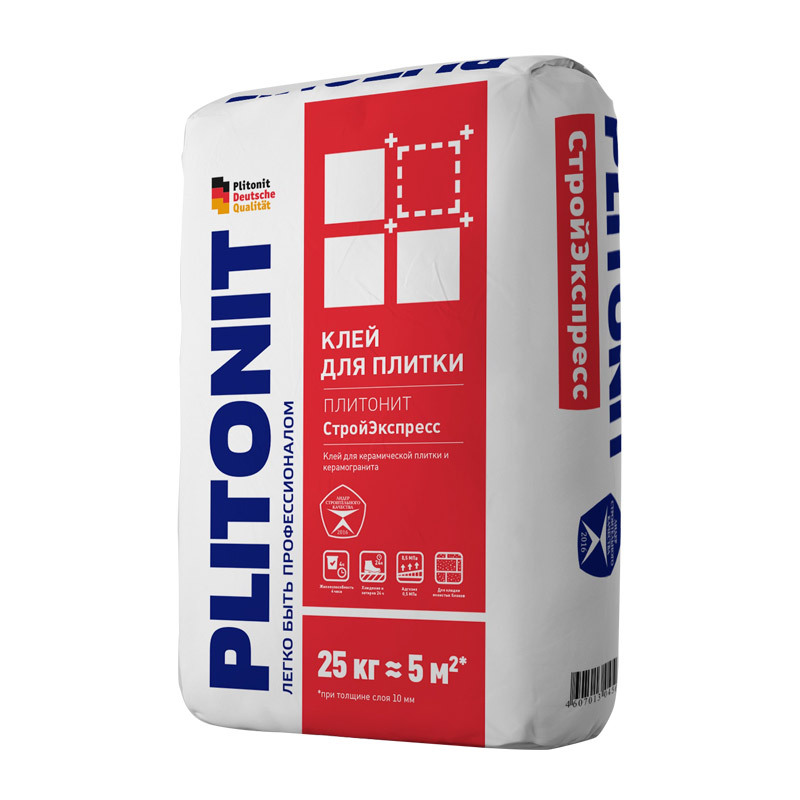
Prospectors
The firm "Miners" produces high-quality tile mixes for warm floors "Plus". The mixture has earned many positive reviews and customer recognition. Suitable for laying tiles on a heating system. The use of this adhesive is permissible on non-deforming substrates. Contact of this glue with water and food is inadmissible.

